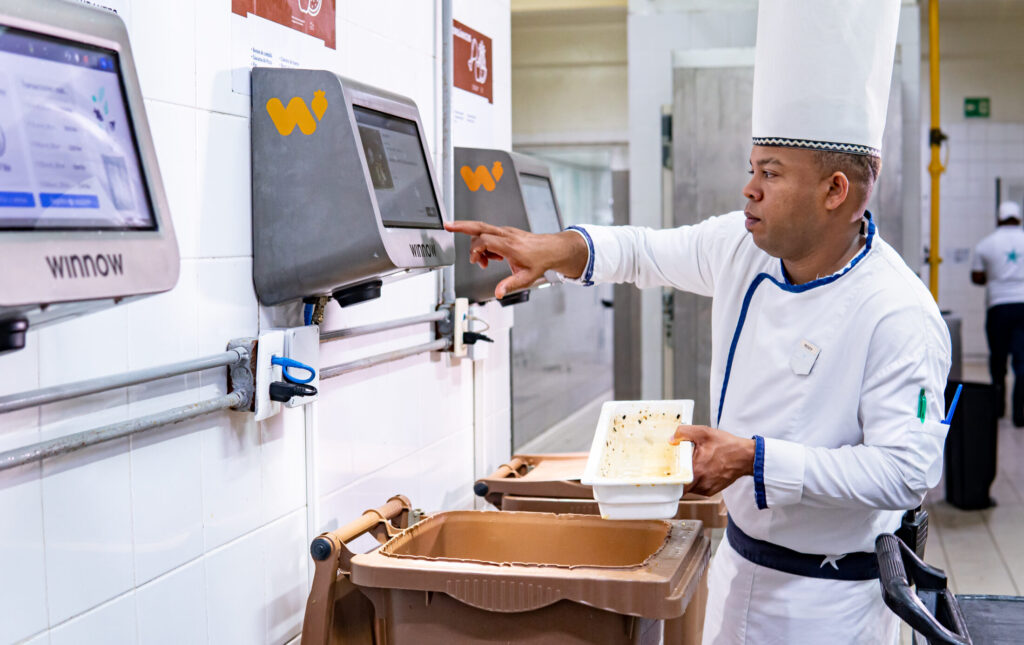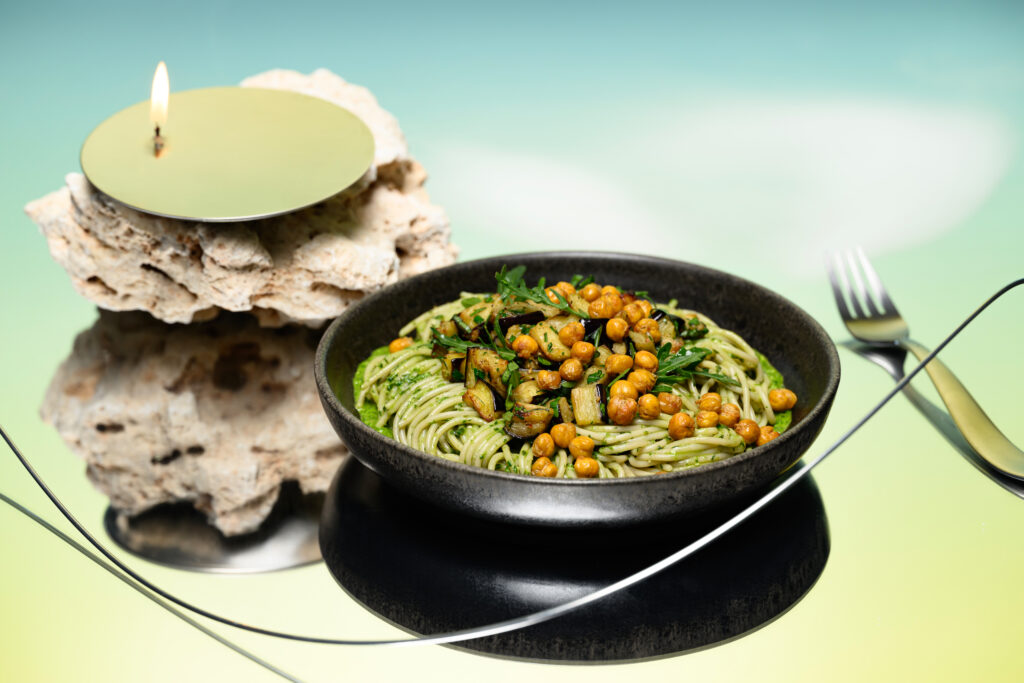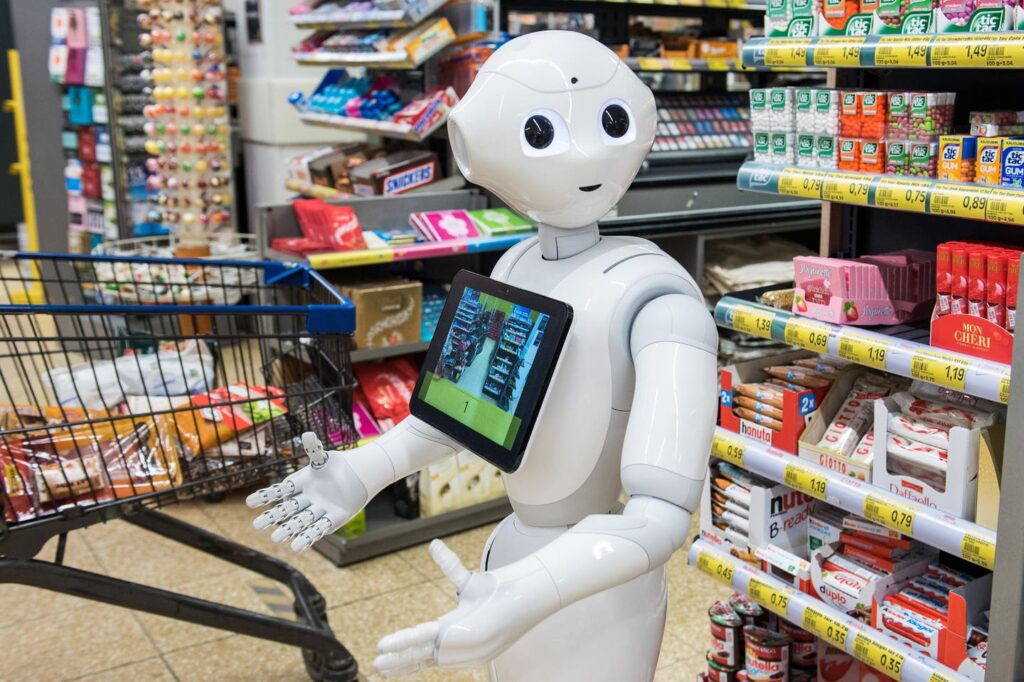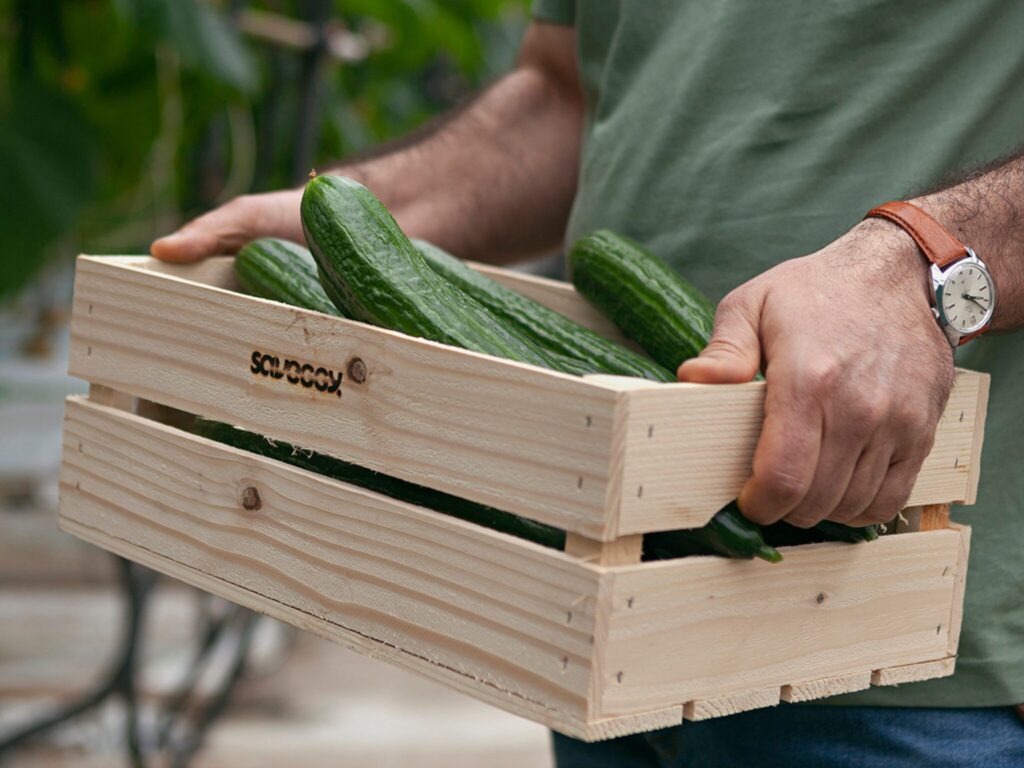From Clothes That Grow Crops to Carbon-Sucking Foods, This Is the Dinner Plate of 2050
8 Mins Read
Two experts predict what the food of the future would look like – if they’re right, you could be eating dishes that grew on your jeans for dinner.
In 25 years’ time, the world population could well approach the 10 billion mark. Such a boom in population would bring about challenges and opportunities for a range of sectors, with the food industry firmly in the thick of it all.
Poverty rates are already high, and hunger is increasing. So is our appetite for meat, and our nasty habit of wasting food. None of that bodes well for the planet or its inhabitants. The food system needs drastic changes, and immediately, if it is to sustain humanity come mid-century.
Over half (57%) of Brits are worried about the food system’s future, and 37% believe that the food we’ll be eating will be bland and taste bad. But it doesn’t have to be that way, as food futurist Morgaine Gaye and Oxford climate scientist Joseph Poore suggest.
Meal delivery service HelloFresh commissioned them to figure out what the dinner plate would look like in 2050. They came up with 10 trends that would shape diets and agriculture. Spoilers: supermarket shopping may be a thing of the past, and communal eating would come into fashion. Speaking of which, you could soon be growing broccoli on your bell-bottoms.
Here are 10 trends we could see in 25 years’ time, according to Gaye and Poore.
Tech will save food from going to waste

Reducing food waste is one of the simplest ways we can lower emissions, since it accounts for a tenth of our climate footprint. We waste a third of all food, and 60% of that happens at the household level. According to the experts, though, by 2050 we’ll have “successfully designed food waste out of our lives”.
This would largely be thanks to the artificial intelligence (AI), which would help scale our use of ‘imperfect’ produce with innovative recipes – think broccoli stem rice and roasted cauliflower leaf stir-fries. AI will be managing our household inventory too, ordering groceries and planning meals based on available ingredients, health needs, and individual preferences.
Plus, every household will have a zero-waste prep system, with leftovers and food waste fed into 3D food printers that can transform them into complex dishes. So your leftover rice and vegetables from lunch could be perfect for sushi night.
Foods will absorb, not emit, greenhouse gases

While the food system is currently responsible for a third of global emissions, with animal proteins accounting for 57% of that share, carbon-sequestering ingredients will dominate the system 25 years from now.
Nuts, citrus, olives, and other tree crops absorb carbon when they expand, especially in areas where no trees exist. New farm technologies, increased consumer interest, and “maybe some policy incentives” would drive their growth. Seaweed and cacti will become important foods for their carbon-absorbing potential.
The experts predict that much of our food will come from bacteria by 2050, which can be grown on demand and mixed with flour or sugar to be incorporated into our diets. Some of these can convert methane into energy, addressing a potent greenhouse gas. The consumption of meat, dairy, and seafood, meanwhile, will have significantly reduced by 2050, though shellfish could remain on the menu because they can act as carbon sinks.
Climate change will reshape the crop landscape

Tropical fruits like mango, banana and avocado will be grown commercially in the Mediterranean in 2050, where they will become dietary staples. Italian coffee wouldn’t just be a reference to espresso- the beans will actually be grown in the country. Olive groves and vineyards will shift northwards, and Austria and Germany will begin growing quinoa and sweet potatoes, while frequent droughts will diminish potato yields.
The UK, meanwhile, will become suitable for vineyards, and major crops like wheat, strawberries, onions, apples and oats will begin struggling, especially in its most productive region in the southeast.
On the other end of the globe, kiwis, apples, and blueberries will shift southwards from northern New Zealand, giving way to bananas, pineapple and coffee.
Heritage crops will bring back agricultural diversity

The food of the future could very much look like the food of the past. Despite the Earth being blessed with 30,000 edible plants, 50% of its cropland is being used to grow just four of them: wheat, maize, rice, and soy.
Crop diversity is critical in building climate resilience, food security, and human gut health. By 2050, Gaye and Poore believe we will have rediscovered native and Indigenous crops that were part of our ancestors’ diets.
The underutilised crops benefit from being well-adapted to their local environment. Think milk thistle and dandelion in the Mediterranean basin, sorrel and plantain in central and northern Europe, and Australian millet and wattle down under.
Niche will be the mainstream

Staying with the crop theme, many crops that are niche today will become commonplace in kitchens in 2050. “Crops that are native to a certain area can often successfully thrive in another, even if on the other side of the world,” the experts say.
Two Andean crops – kiwicha and kañihua – could follow the path of their cousin, quinoa. And Tarwi, the region’s lupin bean, could be a great alternative to soy.
African crops could see similar gains. Teff and fonio could become “the new supergrains”, and the bambara bean and marama bean could compete with lentils, chickpeas, and common beans on the plates and farms of Europe and Australia.
Goodbye, supermarkets?

With AI managing your house, you wouldn’t need to worry about food shopping, prep, or even cleaning up. “This ease with which we will get the ingredients and foods we need via AI will lead supermarkets to redefine their purpose,” Gaye and Poore believe.
The weekly shop will be a thing of the past, replaced by meal delivery kits with personalised quantities and ingredients. Supermarkets, in turn, will evolve into hybrid physical-digital spaces that people visit for the experience of tasting new foods or to socialise instead.
Food will be medicine

Food as medicine programmes are already gaining ground, and medical advancements – like home diagnostic tools, genetic testing, and continuous microbiome analysis – will give everyone access to highly personalised health information.
These will inform our AI assistants’ meal planning systems to optimise our diets for our wellbeing. “From automated portion control based on metabolic data and activity levels to customised food formulations addressing specific health conditions or genetic predispositions – the whole health, wellbeing and food equation will be highly integrated,” the forecasters say.
Communal eating will play a key role

The role of food as a “convenor” will become more important than ever. While we may be able to outsource cooking to AI in 2050, people will choose to continue cooking as a hobby and social activity. The sensory and emotional aspects mean full automation is unlikely to ever take hold in the kitchen.
Communities will likely come together to create neighbourhood growing clubs and cooperatives, and communal meals will be on the rise, with streets and housing blocks gathering to share the results of their growing efforts.
The stories and recipes of our favourite family meals will be preserved in multigenerational databases, and people will be able to experience viral cooking experiences with remote participants (or even deceased loved ones). “Using haptic sensors, we will even feel the touch of those on the holographic representation, making cooking with grandma feel even more real,” predict Gaye and Poore.
Vertical farming and meals on clothes

Urban agriculture will be all the rage in 2050. This could materialise in the form of the aforementioned communal buying clubs, as well as at-home countertop growing units and personal bioreactors, all powered by renewable energy. “The kitchen will include integrated home growing units for herbs, vegetables, and even some plant proteins,” the forecast suggests.
Intriguingly, Gaye and Poore raise the idea of “grow-your-own clothing”. Material science innovations could allow nomads to stay self-sufficient by using their clothes to grow food on the go. For example, each pocket of a puffer jacket could be used to grow plants like herbs, microgreens and plant proteins.
Meanwhile, vertical farms will be integrated into retail units for ultra-fresh produce, and alternative growing systems will be accessible via on-street vending machines to make fresh foods the future impulse buy. Printed foods with customised nutrient and flavour profiles will also be available in-store.
Zero-waste packaging will be a reality

Edible packaging is already a thing; by 2050, zero-waste packaging systems could be commonplace. High-value recycling will see materials broken down and brought back into the circular economy, and most items will feature advanced preservation techniques to eschew packaging altogether.
Consumers will have access to full-scale transparency through “product passports” that include food miles and carbon footprints. Blockchain-tracked supply chains will enable food origin and water footprint tracking too. Meanwhile, all products will now have eco-score labels.
“Our diets will probably look different in 2050, but perhaps not in the way that people might think. Climate change will mean that a broader range of drought and heat-resistant crops will need to be cultivated, some of which our ancestors would have grown,” said Poore. “We’ll also need to eat a diet lower in animal products to avert severe global warming; these foods will be good for our health and the planet.”
Holographic cooking may sound dystopian and unsettling, but if you can grow food optimised for your and the planet’s health on your countertop and clothes, the future looks promising.



